FC Nordsjælland have had a slow but steady ascent over the last few years, from occasionally finding themselves in the relegation round of the Danish Superliga to becoming a more established side in the championship half of the league to now where they are in a position where they can challenge FC Copenhagen at the top of the league!
Last season, although they finished top of the league in the regular season, two wins in their last five playoff games meant that they would narrowly miss out on the title by four points.
However, their rise to this position is still phenomenal, with the side putting their trust into youth, with the squad having an average age of 22.1 this term. The sharp change into trusting academy players results from the club being owned by Right to Dream, a Ghana-based academy.
From Right to Dream’s acquisition of the club in 2015, many players, such as Kamaldeen Sulemana who played in Ligue 1 for Stade Rennais and who is currently in the Championship with Southampton as well as Mohamed Diomandè, have graduated from the Right to Dream academy and been given a platform to showcase their talent on a European stage.
However, Nordsjælland have provided a platform for young talent from Africa and the same exposure for local and regional young talents, such as Brentford’s Mathias Jensen in the premeir league and Andreas Schjelderup from Norway.
This campaign, over the first eight games of the regular season, FC Nordsjælland find themselves in third with 17 points, two points behind Copenhagen and just one behind Brøndby.
Despite this, the side have the best goal difference in the league and the best goalscoring record, with the side netting 21 times in their first eight games. Johannes Thorup, the manager, has developed a fascinating group that allows fluid movement from the midfielders, enabling the players to support one another in the wide areas.
This scout report will provide a tactical analysis of the elements of FC Nordsjælland’s tactics that have enabled them to progress the ball and consistently create chances against their opponents in the division.
Nordsjælland in build-up: structure & principles in possession.
Coaches such as Fernando Diniz and Rhulani Mokwena have been heralded recently online for their approach to the game, with their brand of football dubbed as relationism. This style of football deviates from the positional nature that has cascaded throughout Europe and much of the world.
However, Thorup’s Nordsjælland provides an example of how these two concepts are not necessarily separate ideas or the antithesis of one another but instead how they can be used on a spectrum in different phases of possession to progress the ball and create chances consistently. This goes back to the essence of the game, which is solving problems individually, in groups, and as a team.
In the first build-up phases, Nordsjælland’s midfield three moves into positions that allow them to support their centre-backs and the goalkeeper, who forms a back three with the centre-backs.
Nordsjælland’s midfielders can often be seen dropping deeper together in one line in the central areas, which, as mentioned before, allows them to support the back three as well as move into positions that enable them to support passes into the wide areas.
All three of their midfielders can be seen moving towards the back three, leading to the side drawing opposition pressure. Nordsjælland’s full-backs provide maximum width, often taking high and wide positions, with the wingers in the side often inverting and the strikers dropping deeper to try and receive the ball between the lines.
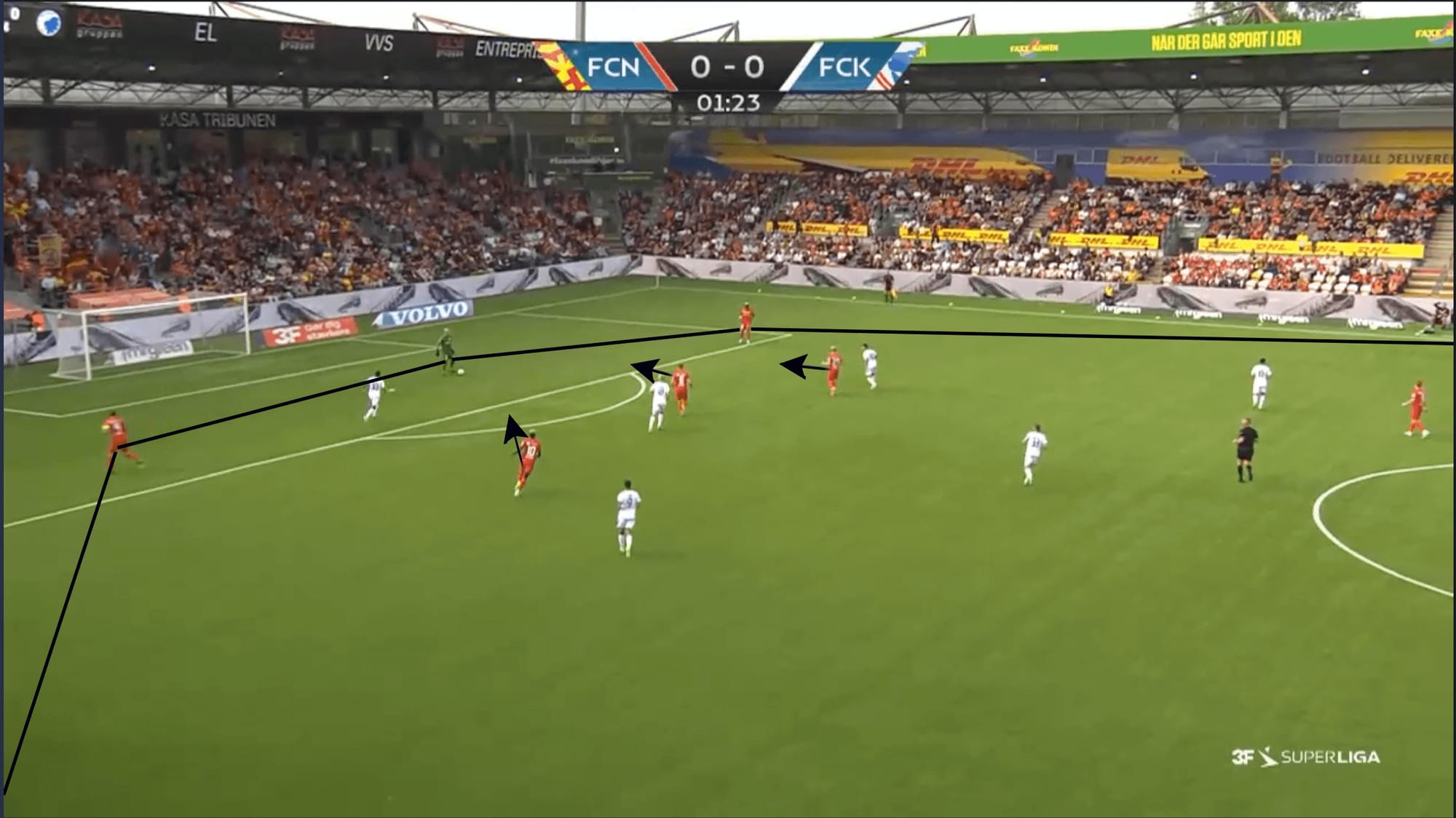
Due to the position of their midfielders as well as their inverted winger and dropping striker, opposition teams often look to cover the central areas to prevent Nordsjælland from playing through central areas.
As a result, the space in the wide areas is left relatively unoccupied. This leaves enough space for the full-backs to run into to receive the ball and enough space for the midfielders to support the full-backs and vice versa.
In this instance, Martin Frese, the full-back, drops deeper, and Daniel Svensson, the midfielder, advances to provide a passing option for either the centre-back Adamo Nagalo or Frese. This allows the side to create 3v1s and 3v2s down the flanks in their own third.
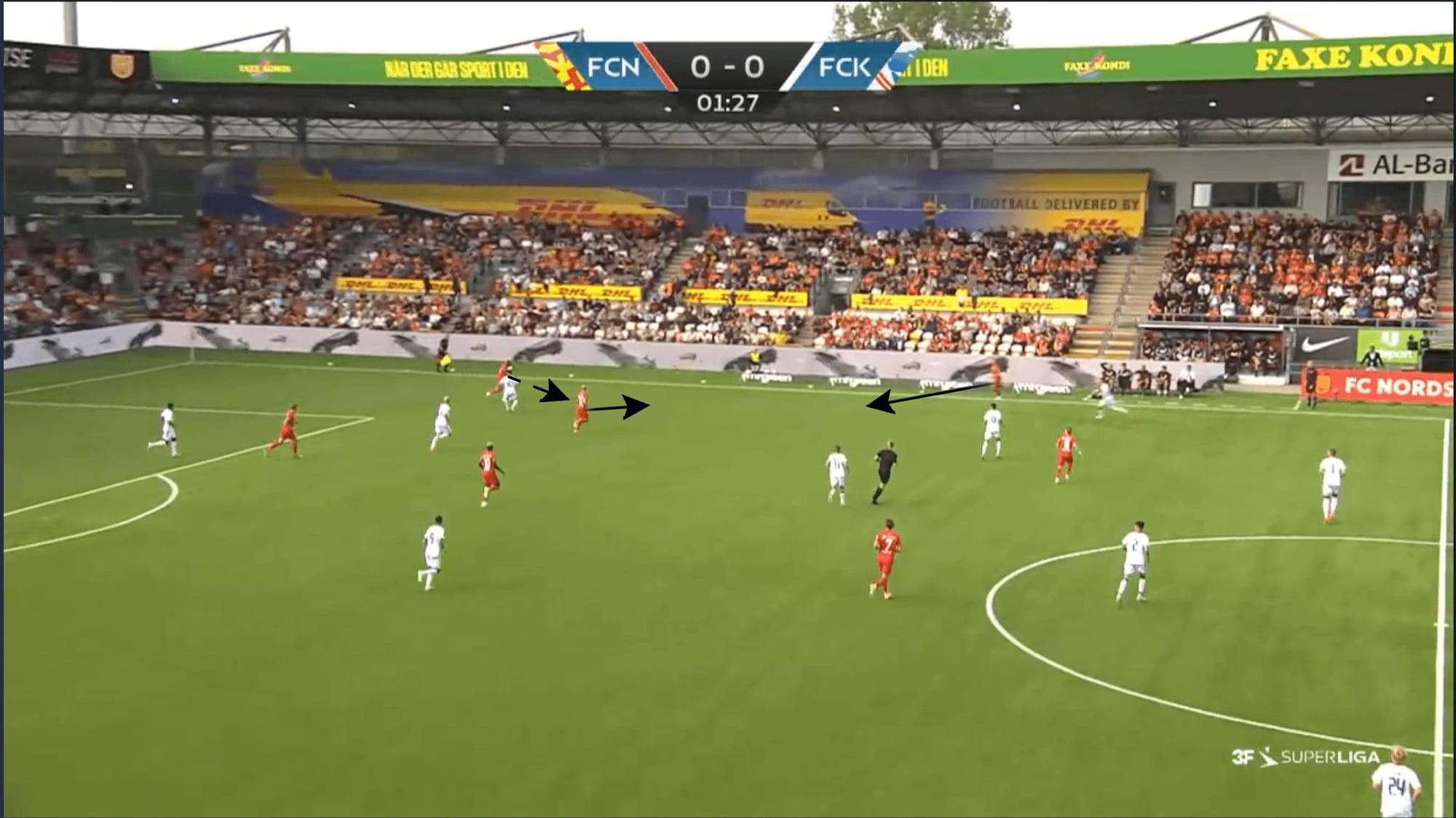
The flexibility of their midfielders can also be shown in this instance, as seen by the movement of Diomandè. Rather than beginning to move closer into the space on the opposite side of the field, Diomandè, as well as Jeppe Tverskov, look to move towards Svensson in order to provide him with passing options, once again drawing the opposition to a particular area of the pitch, leaving room for a switch in possession.
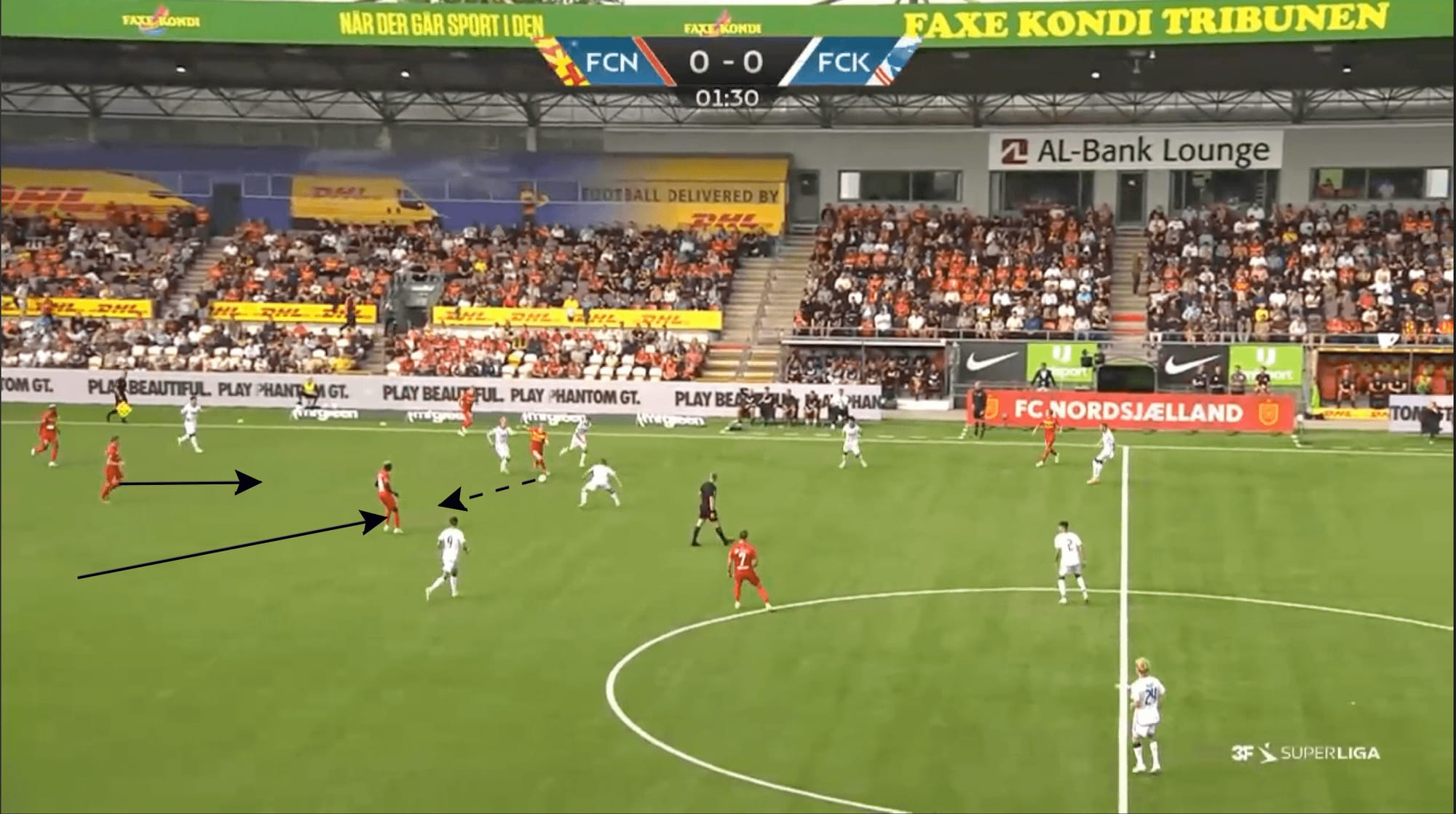
The same concepts can be seen again in the image below, although this time, taking place from a goal-kick scenario. Once again, the midfielders can be seen dropping in one line, forcing the opposition wingers to invert in order to cover them. As a result, Frese and right full-back Oliver Villadsen are left free to receive the ball.
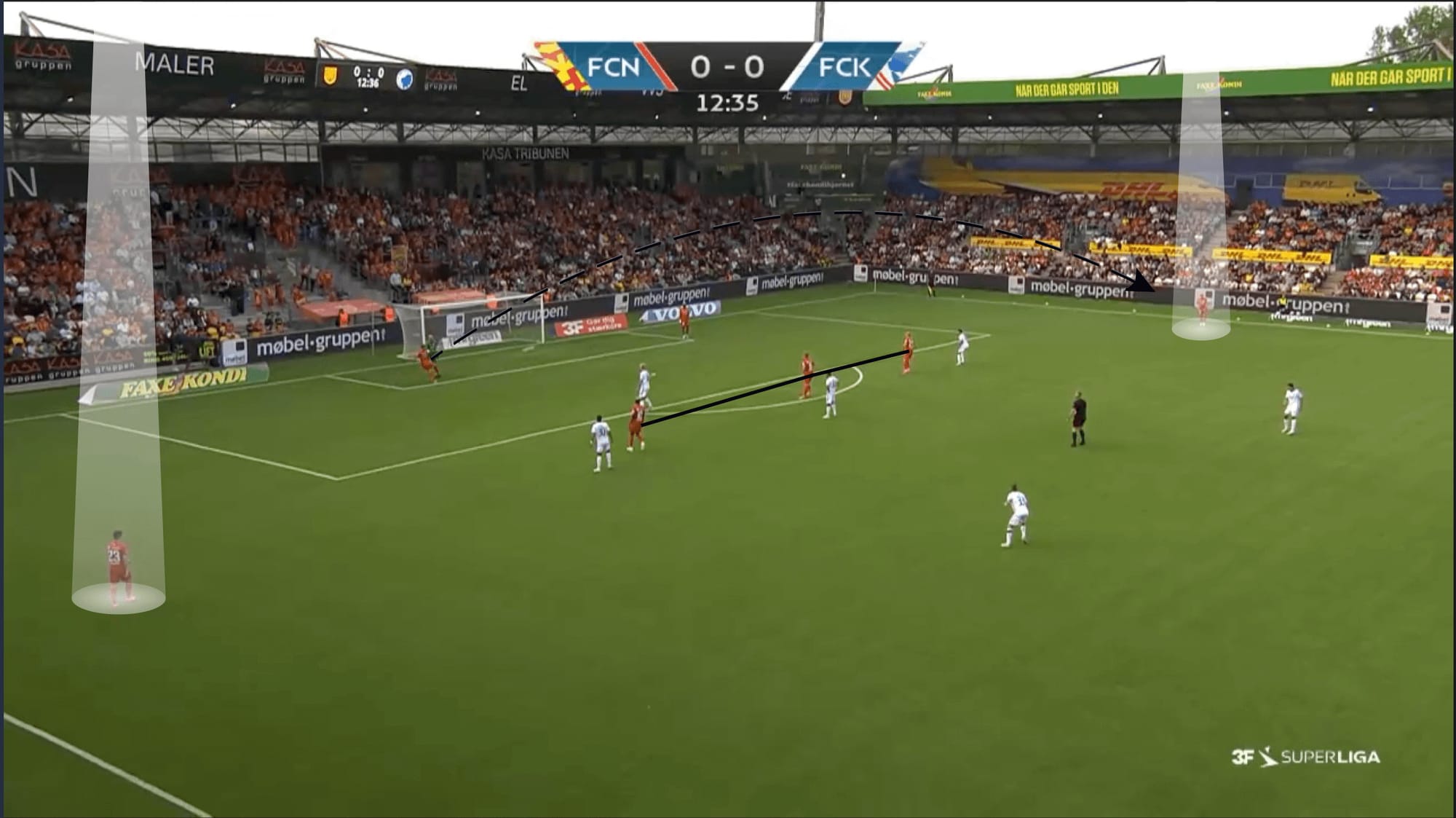
Nordsjælland’s flexibility in midfield
The midfielders in the side are truly fascinating to watch, with the players either moving within close proximity to one another, creating 2v1s, 3v1s, etc., against the first line of the opposition. This is especially important as opposition teams often look to prevent passes between the lines, so they are reluctant to press the midfielders.
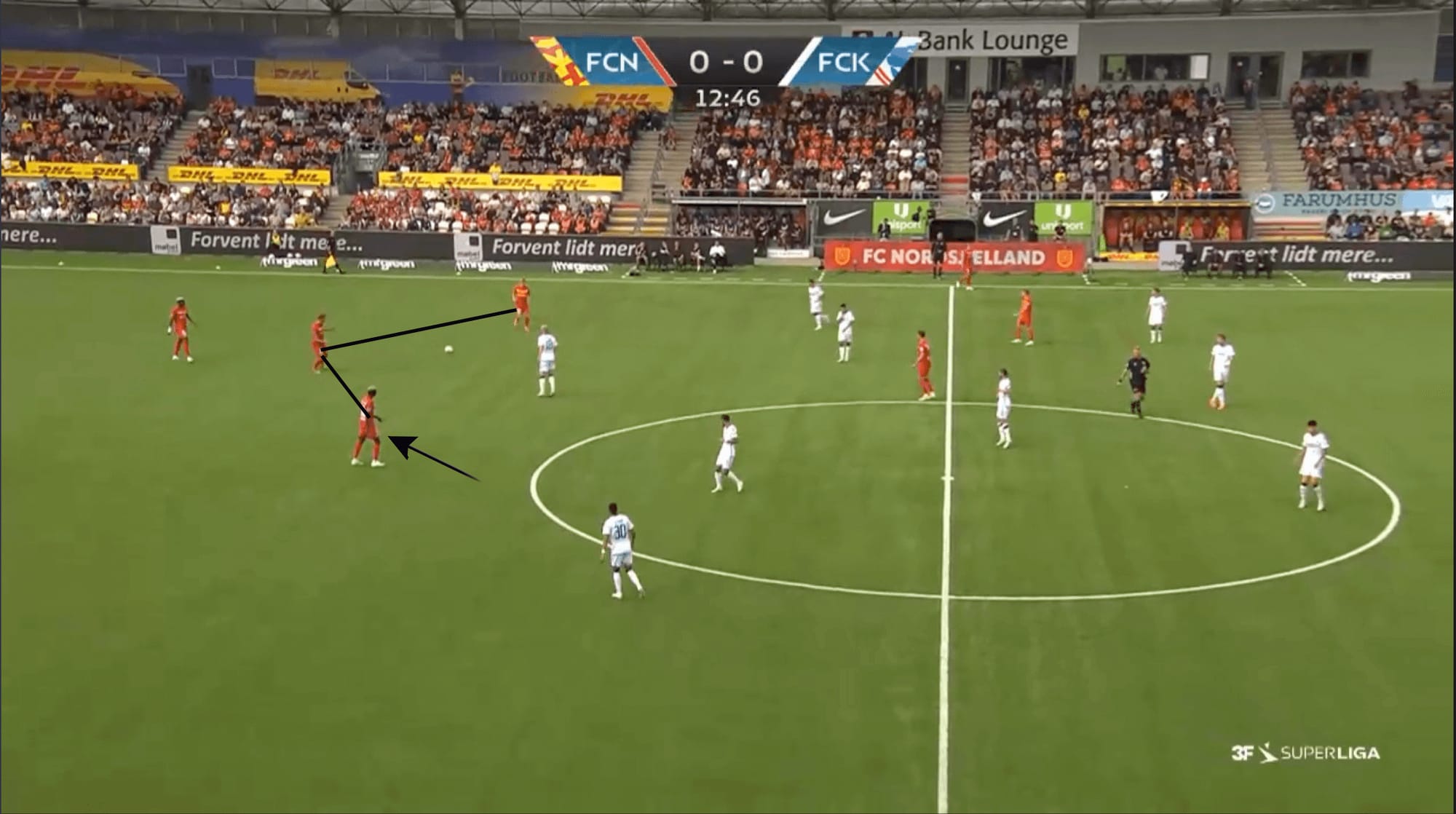
With their midfielders in close proximity playing the ball to one another and moving into spaces ahead, players in the second line of the opposition’s defence are often instigated into advancing in order to aid their teammates. This either creates space for players to receive between the lines or to the left and right of the second line of the opposition.
This can be seen below, with the opposition right midfielder advancing in order to cover Svensson, and as a result, Schjeldrup can receive the ball to the left of the second line.
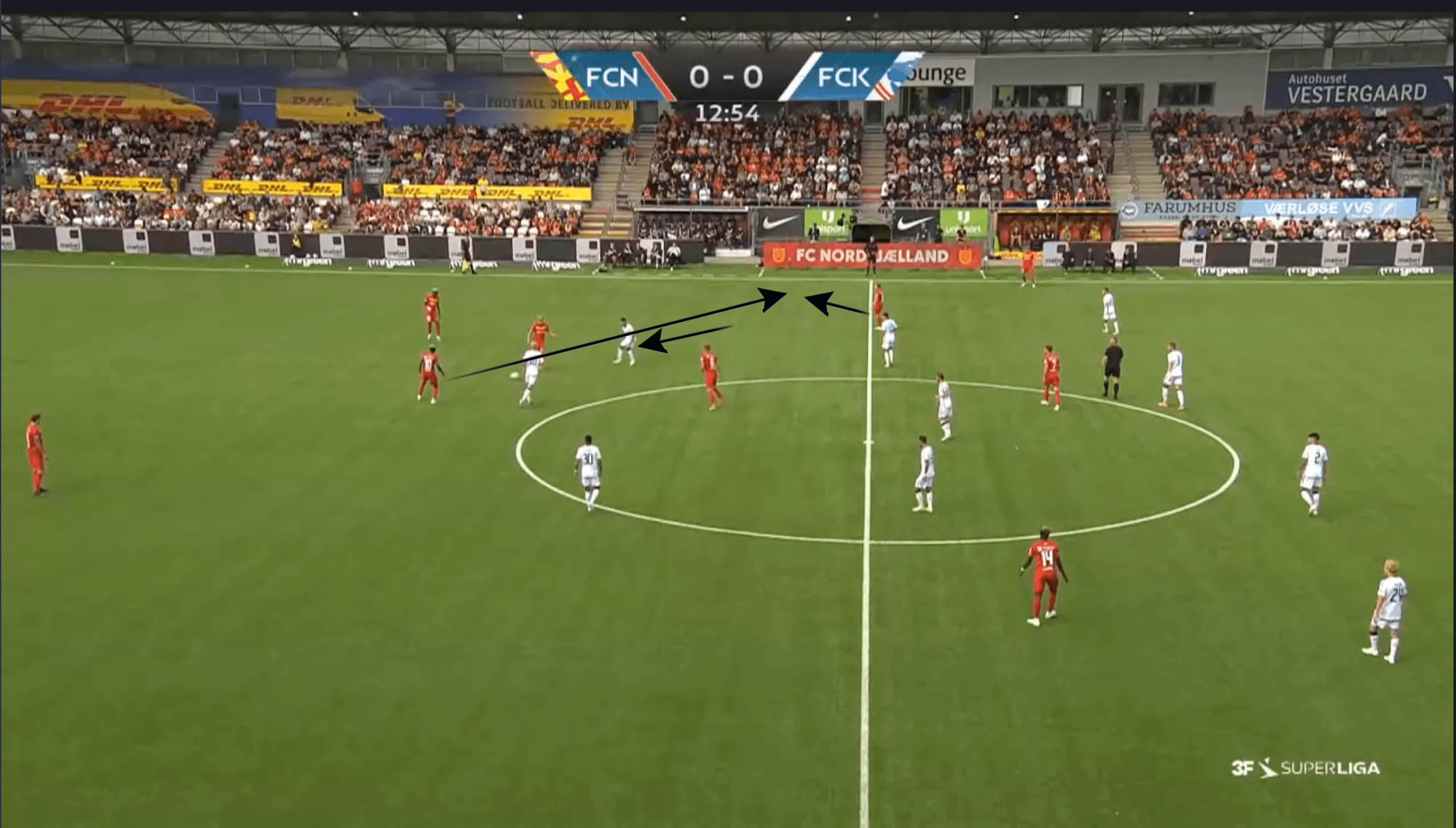
In the middle third, both midfielders and defenders also look to drive forward into space to free up passing options between the lines. In this instance, rather than Diomande dropping deeper, he advances into the space between the second and third lines of the opposition defence.
Svensson and Tverskov can still create a 2v1 against the opposition right striker, and with the opposition orienting their positions to prevent passes to the Nordsjælland players behind them, Svensson drives forward into space.
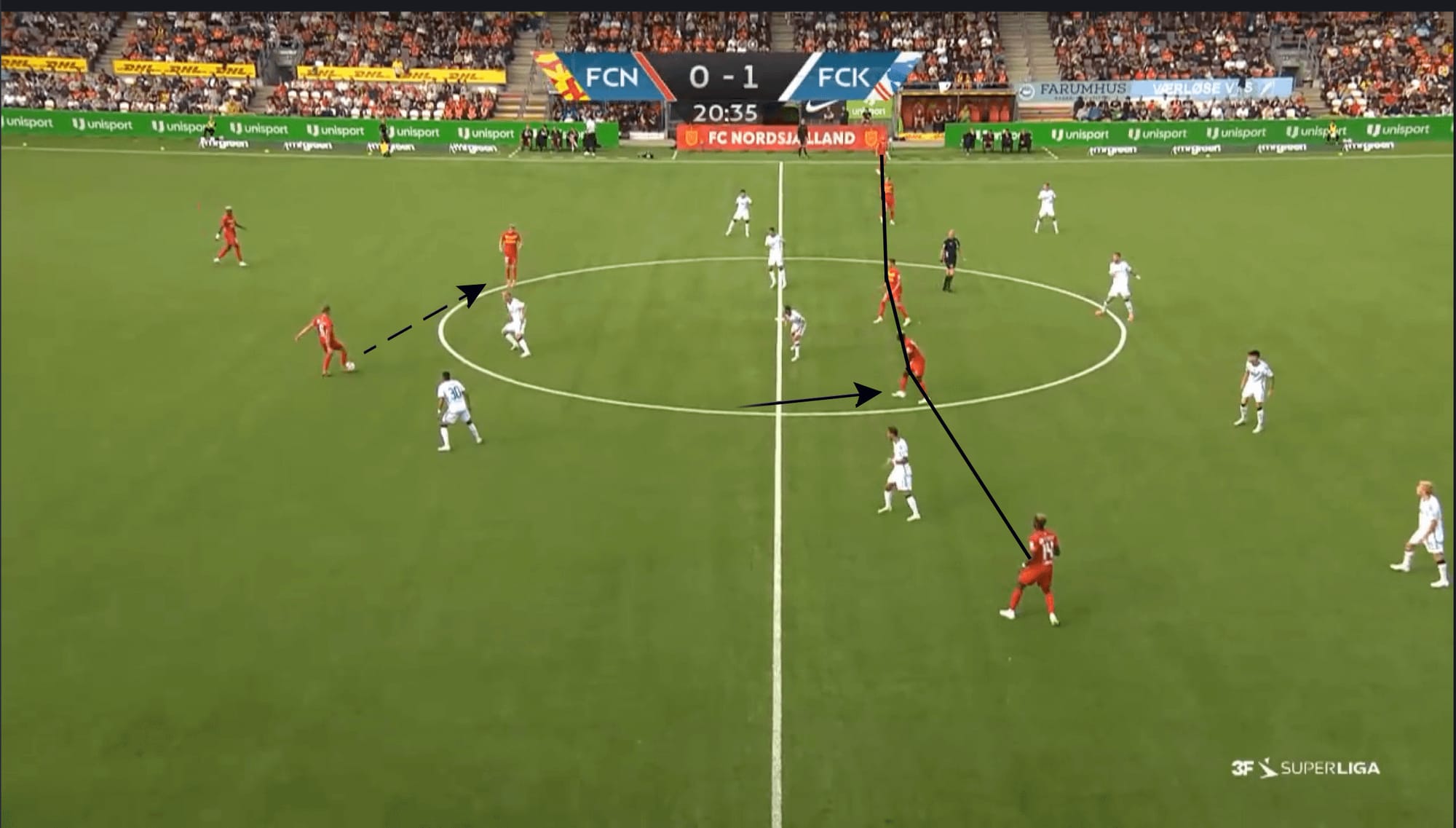
As a result of the right central midfielder advancing to pressure Svensson and the left central midfielder shifting to his right in order to cover the striker, Marcus Ingvartsen, space is created for Diomandè to receive the ball.

The same method can also be seen in the image below, with Nagalo advancing forward until the opposition defenders ahead of them begin moving forward, and Schjeldrup begins to invert into the space behind.
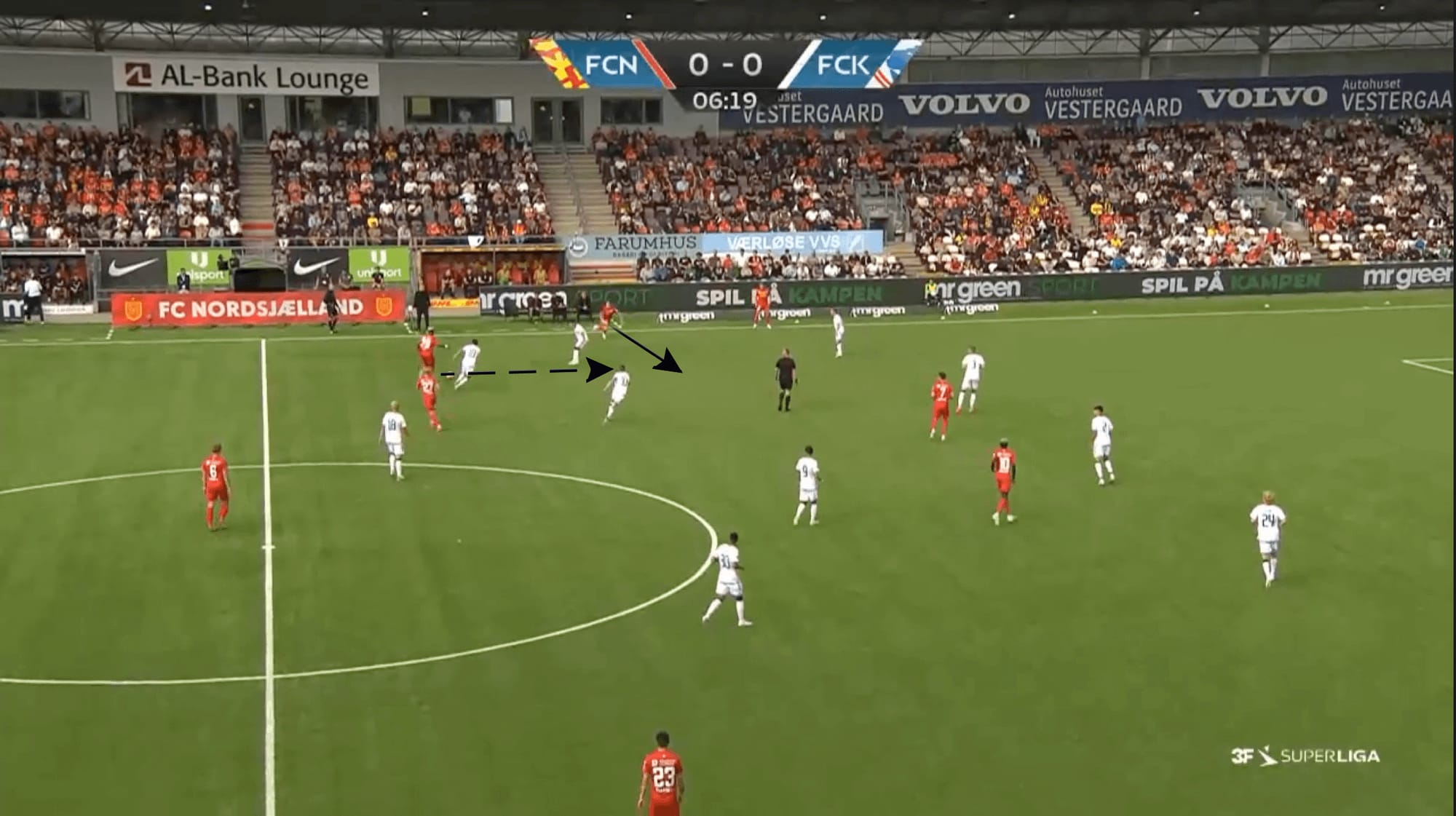
Nevertheless, Nordsjælland do not always look to play to players between the lines. In their game against Midtjylland, Rather than have Frese maintain the width in the side, he would drop deeper and play in the back 3.
Against Midtjylland’s 5-3-2 created situations where the opposition midfielders would be forced to step up and press the Frese on the right and Kian Hansen on the right.
This, in turn, would prevent the midfielders from being able to shift and cover Diomandè, who looks to receive the ball to the right of the second line of defence.
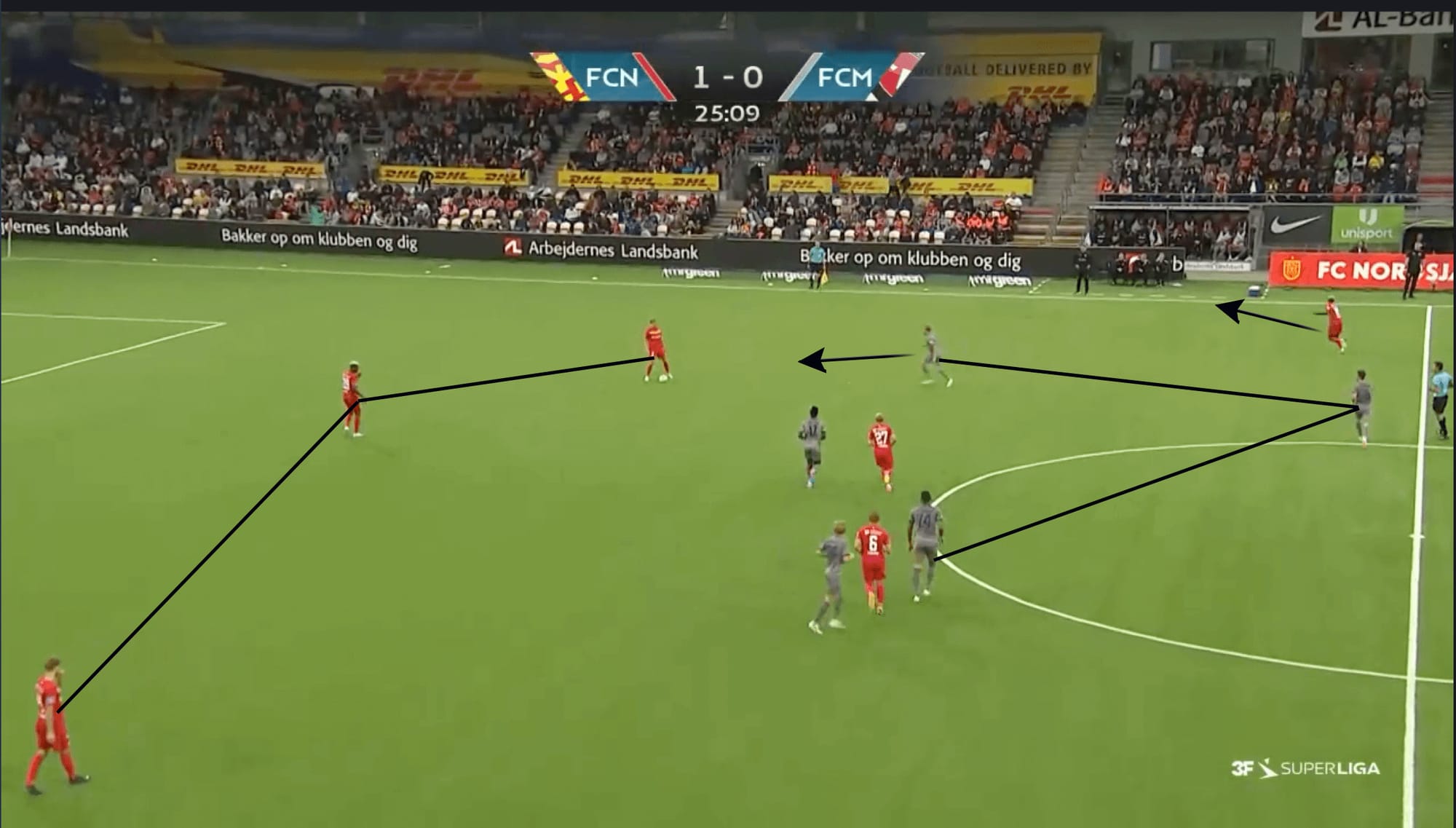
The same action could also be seen on the left side, with the opposition left central midfielder advancing to press, Oliver Antman, the right winger, shifts towards the left of the opposition defence to receive the ball.
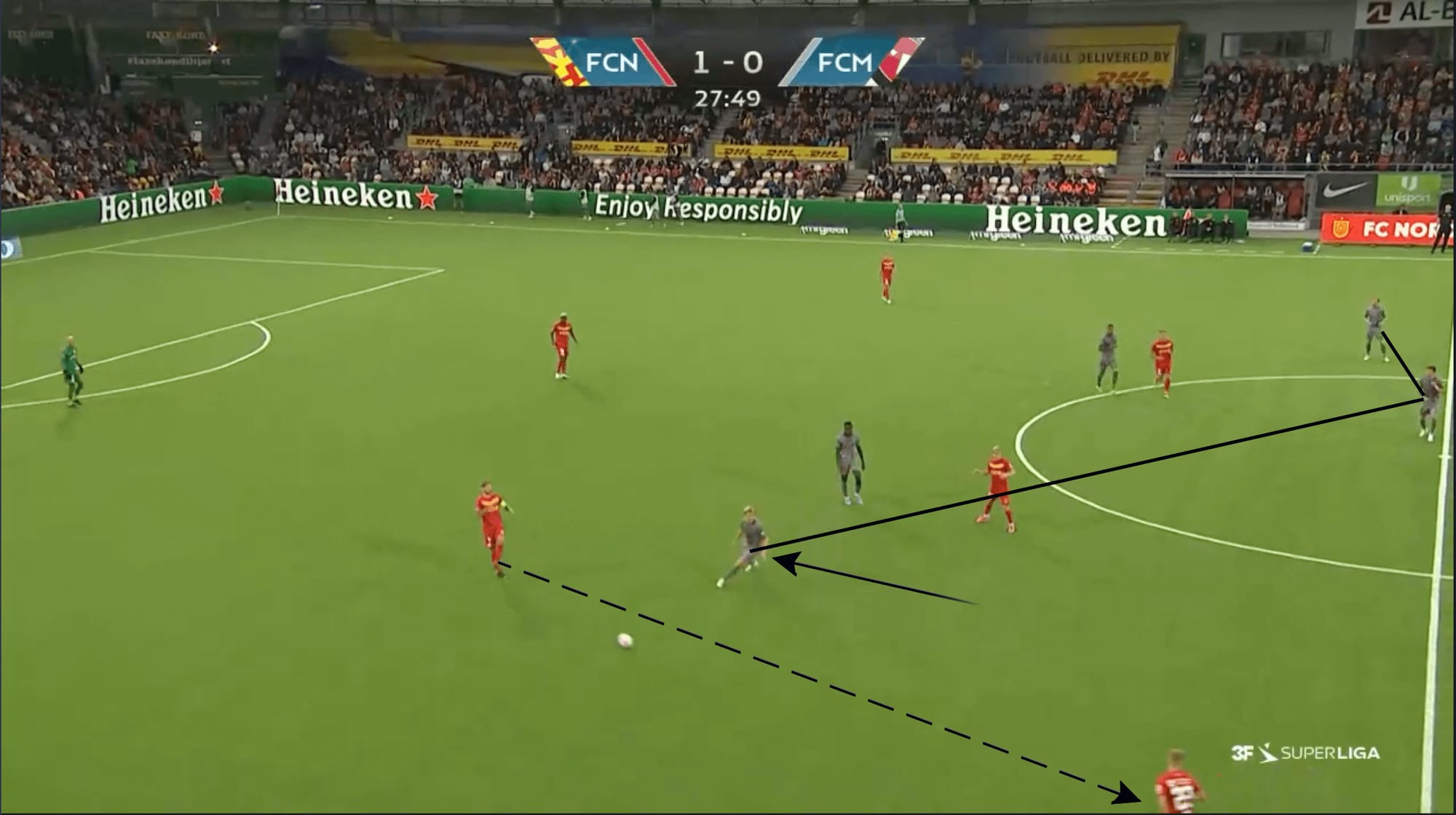
Even though there are differences between players’ positions in the Midtjylland and Copenhagen games, many of the same ideas remain.
Nordsjælland’s midfielders and defenders will look to play and support one another in the central areas either to reduce opposition cover through instigating the press and have access to the players behind the second line of the opposition or to find players to the right and left of the second line of defence.
There is always at least one player positioned high and wide, which is vital to the side’s attacking play in the final third.
Chance creation in the final third.
The final third is where the mixture of the “positional” elements of the side coalesce with more “relationist” ideas. In this instance, Villadsen is the player stationed high and wide whilst the right winger, Benjamin Nygren, inverts into the centre. As the ball is played out to the wide areas, the player positioned between the lines and the wide player are able to create 2v1s and 2v2s against the opposition players on the left and create a threat through underlapping runs.
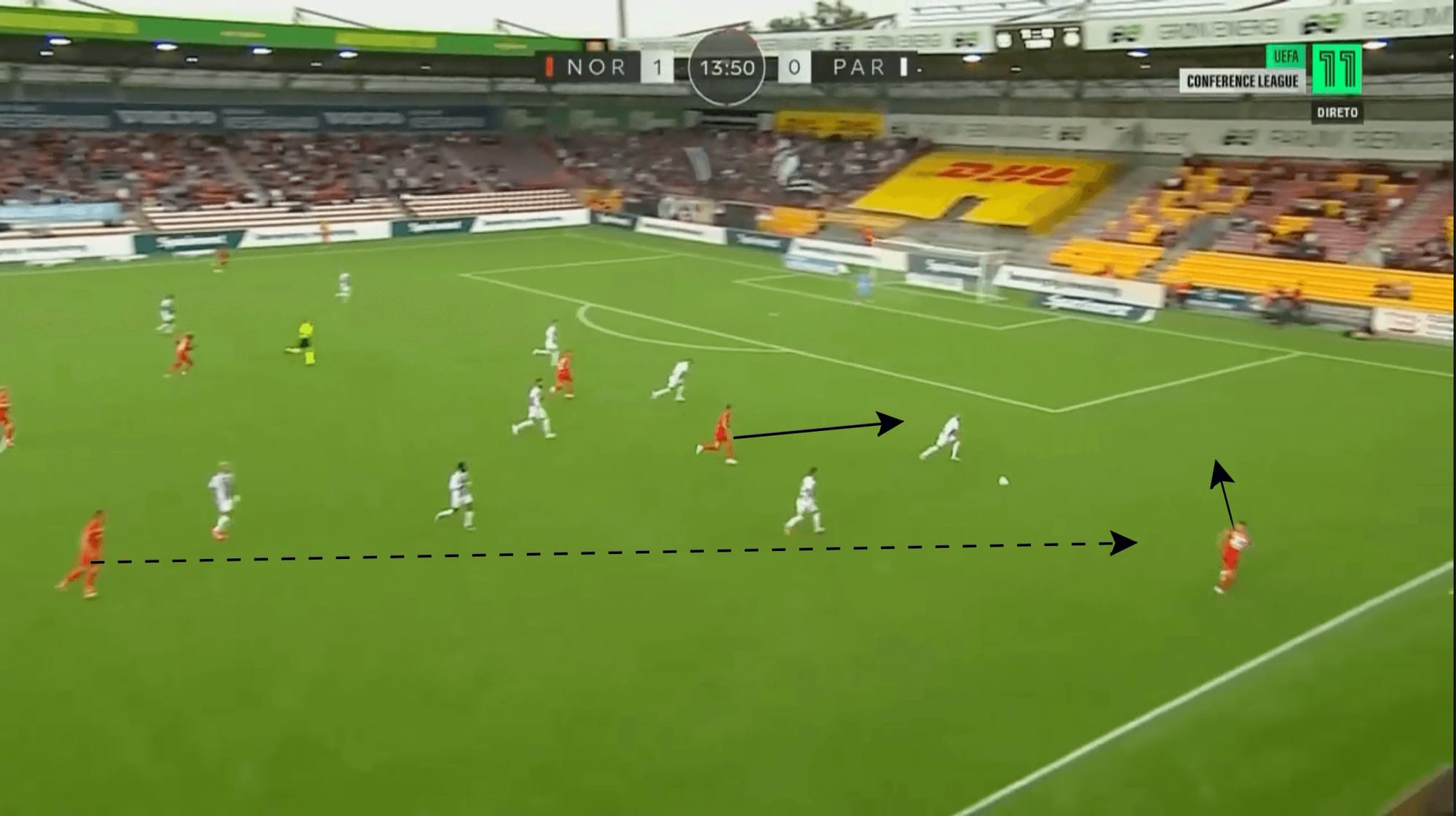
However, if Nordsjælland are not able to find and create shooting opportunities directly from this combination, the midfielders in the side look to move towards the wide areas to offer support and continue to overload the flank, with some players looking to move towards the wide areas whilst others look to continue to provide a series of underlapping runs.
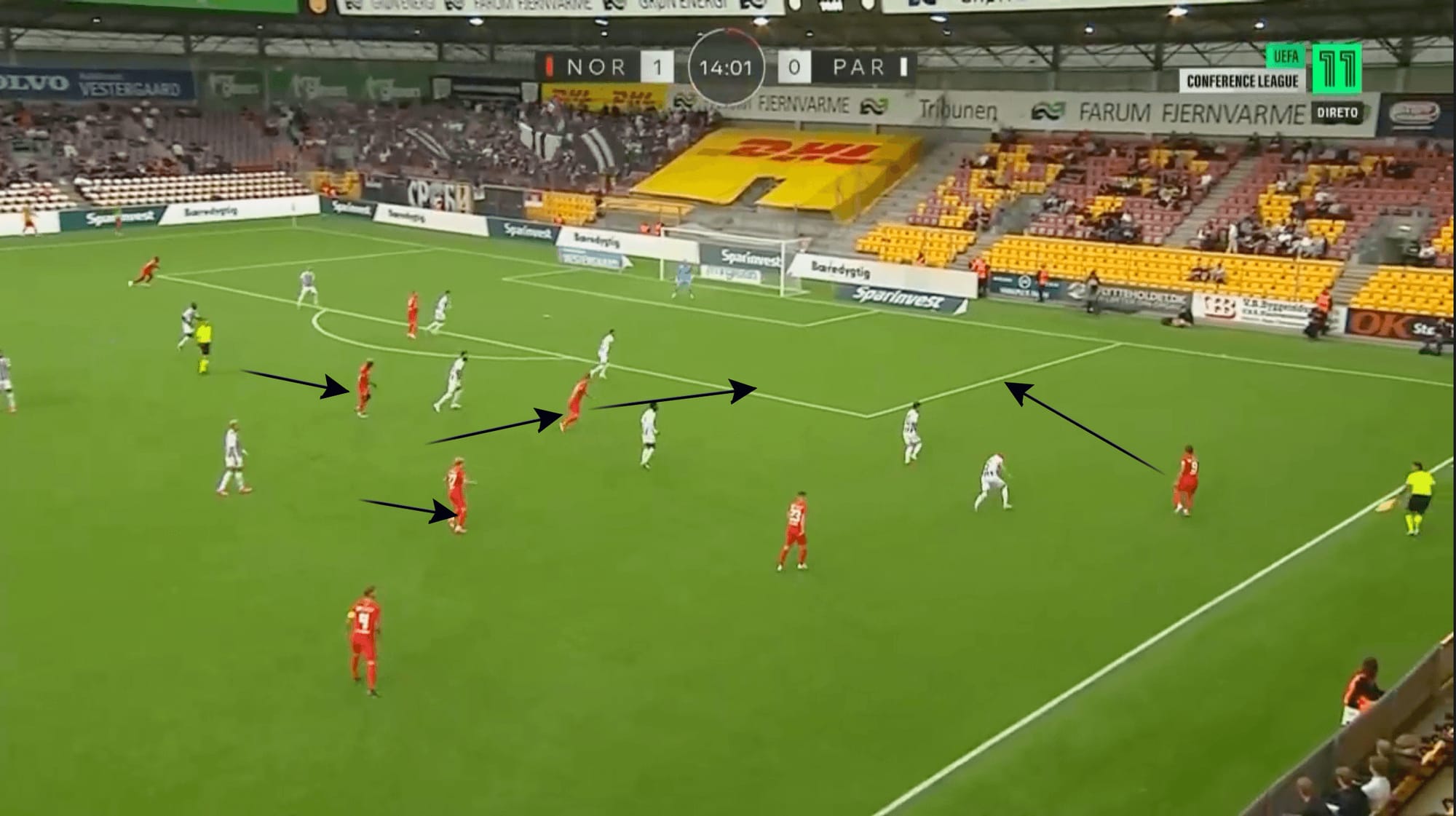
In order to deal with the threat of the 2v1 out wide, cover can be reduced for the opposition in key areas such as the example below. Like the previous image, Nordsjælland creates a dangerous situation with one player in the wide area and another providing an underlapping run.
As a result of this, the opposition centre-back shifts across in order to prevent the numerical advantage.
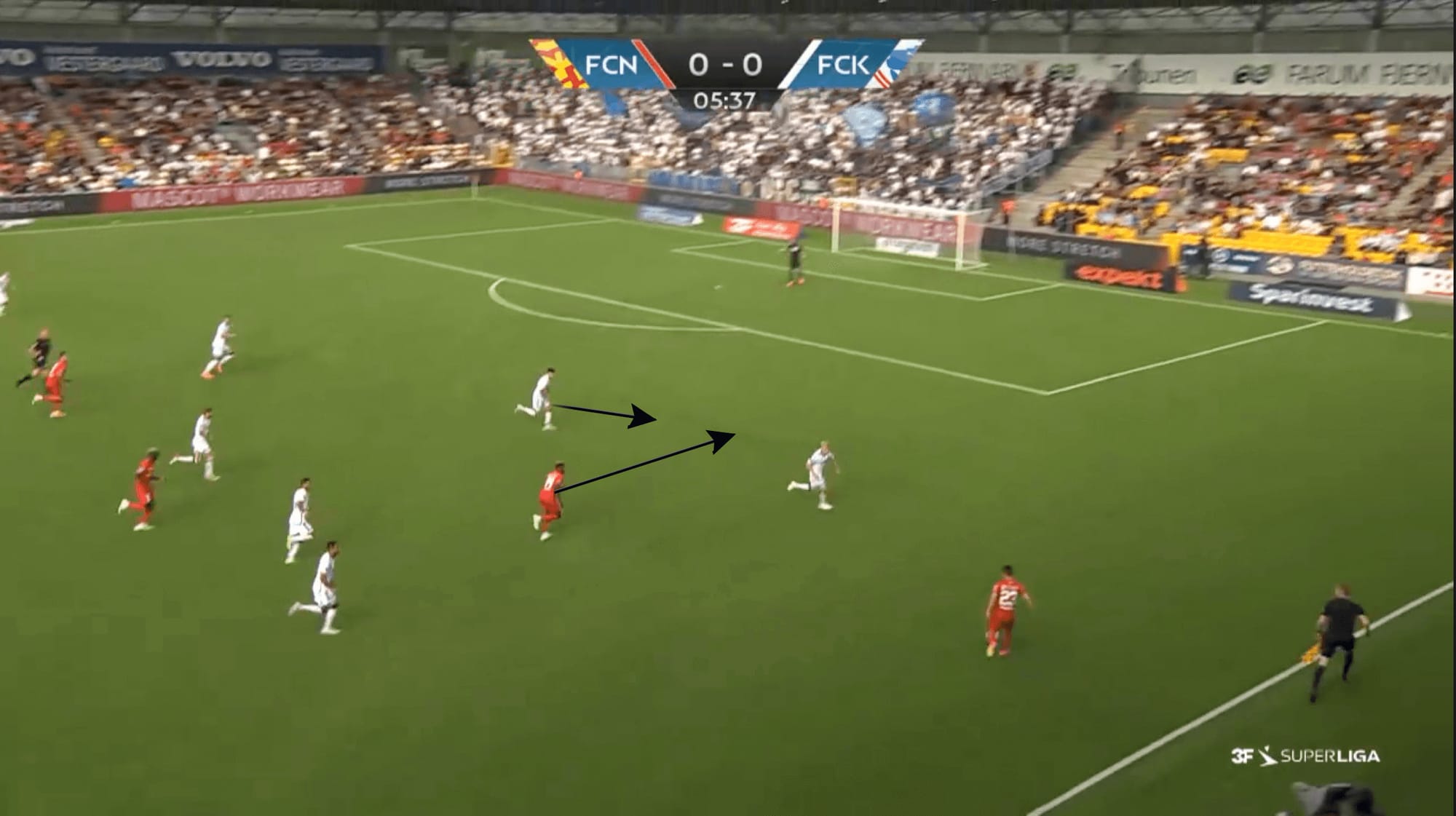
This then creates space for runs in between the two centre-backs.
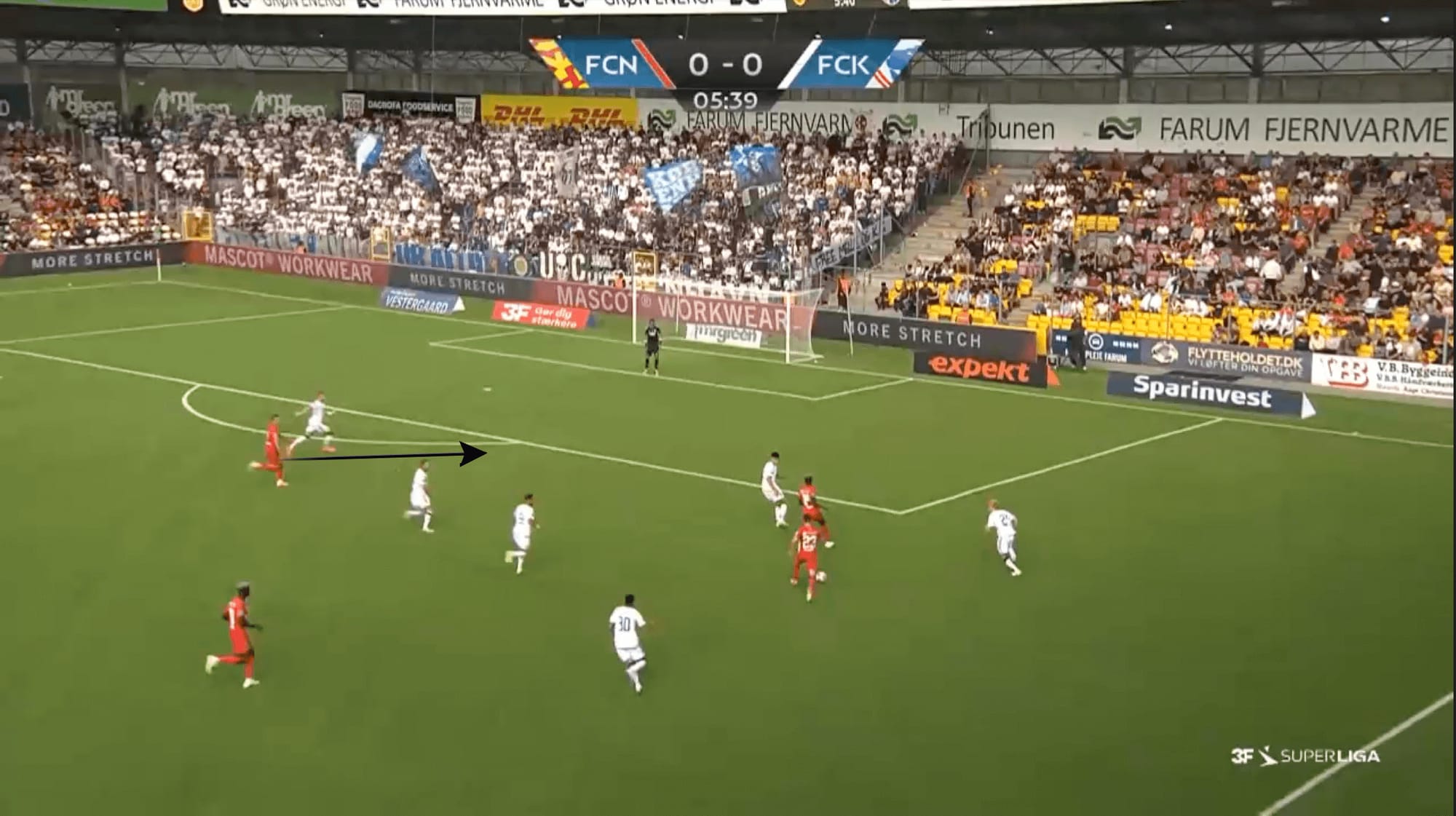
Generally, in the wide areas in the final third, Nordsjælland’s midfielders will look to move towards wide areas and provide underlapping runs, as can be seen in this instance, with Tverskov driving forward, playing the ball out wide and then continuing his run.
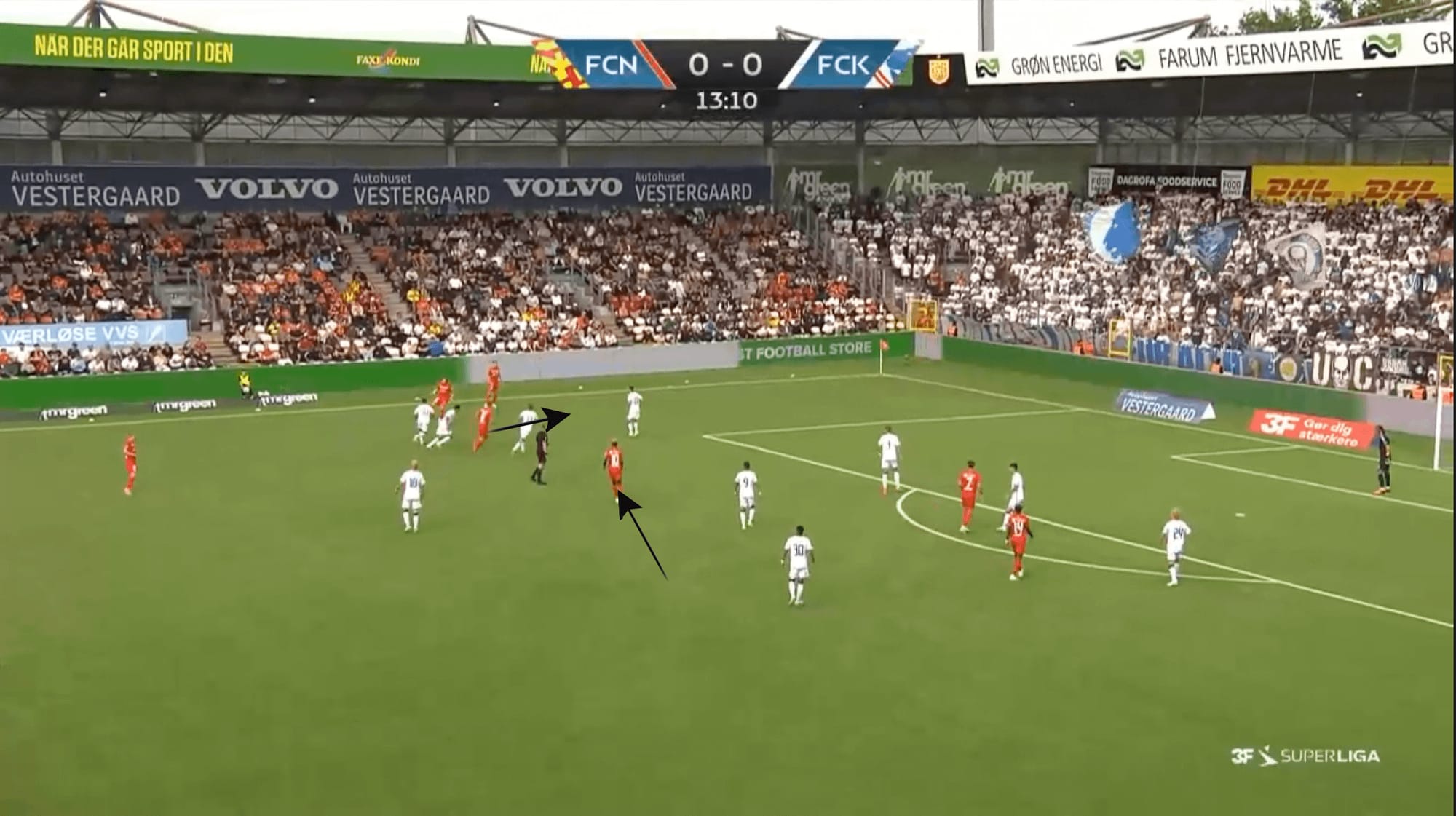
Conclusion
FC Nordsjælland is undoubtedly one of the most enjoyable teams to watch in world football from various perspectives, as this analysis has shown. Not only do they provide a display of some of West Africa’s brightest talent, but they can also showcase some top European talent.
Thorup has developed a system that has enabled the side to take advantage of the positional element of their game whilst still allowing flexibility from the midfielders in order to create overloads in wide areas.
With much of the season still to play, it is still early to consider whether Nordsjælland will be able to challenge for the title by the time the playoffs begin.





Comments